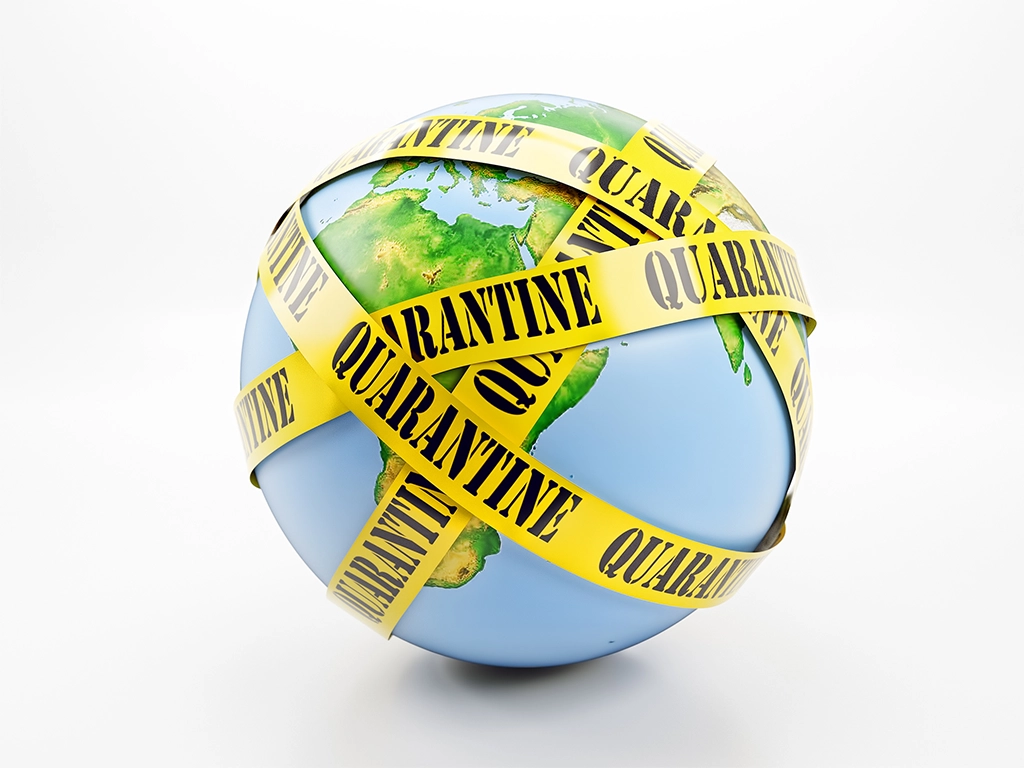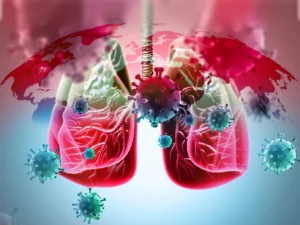There will be another global pandemic. We don’t know when. We don’t know what. But we do know it’s coming. Thus, it would be wise for organizations and governments to start preparing now.
In Part 1 and Part 2 of this series, we discussed 10 viral families with pandemic potential. However, viruses aren’t the only cause of global health emergencies. The WHO’s R&D Blueprint highlights 5 species of bacteria that are “anticipated to pose a significant public health threat” in the future. Let’s dive into them now.
Vibrio Cholerae Serogroup O139: Don’t Drink the (Untreated) Water
Common Name(s) for Disease(s): Cholera
Per Dr. James P. Morgan, “Cholera was the classic epidemic disease of the nineteenth century[…]It flourished in the great cities, New York, Cincinnati, Chicago; it crossed the continent with the forty-niners; its victims included Iowa dirt farmers and New York longshoremen, Wisconsin lead miners and [black] field hands.” Cholera’s iconic symptom is “acute dehydrating diarrhea” which can result in death. Responsible for 7 pandemics since 1817, V. cholerae is one reason to be grateful for modern water purification.
As 26% of the world lacks access to clean water, cholera still rears its ugly head periodically, especially in West, South, and Southeast Asia. In 1992, a genetically mutated strain — serogroup O139 — risked another pandemic. Fortunately, genetic drift resulted in O139 losing some of its virility, and the potential pandemic petered out. Nevertheless, endemic cholera still causes up to 143,000 deaths per year; thus, an eighth cholera pandemic remains probable.
Shigella Dysenteriae Serotype 1: If You Played Oregon Trail, You Know
Common Name(s) for Disease(s): Dysentery, Shigella, Shigellosis
Keeping cholera company in the deathly diarrhea department is S. dysenteriae. Currently endemic to sub-Saharan Africa, Southeast Asia, and the Eastern Mediterranean, S. dysenteriae is not the only pathogen that causes dysentery (i.e., bloody diarrhea | i.e., the thing that always ends your Oregon Trail games). However, it is the one the WHO is most worried about.
According to the book Clinical Gastrointestinal Endoscopy, “[S. dysenteriae infection] can be divided into [2] phases.[…]The second phase is caused by invasion of the organism into the large intestine and produces fever, cramps, bloody diarrhea, and tenesmus.” (If you don’t know what tenesmus is, we discourage you from looking it up. Ignorance is bliss.)
Like cholerae, Shigella spread mostly via contaminated water and food. There is no vaccine.
Salmonella Enterica Non Typhoidal Serovars: Why No One Eats Chicken Tartare
Common Name(s) for Disease(s): Salmonella, Salmonellosis
Unlike our last 2 bacteria, this digestive scourge tends to prefer food over water. Each serotype of S. enterica can cause diseases in humans, and yet each has its own preferred species of (edible) animal host.
Salmonella is less threatening than other diseases on this list; for most people, it causes only a mild case of “fever, abdominal pain, [diarrhea], nausea and sometimes vomiting” — all of which can resolve without treatment. However, children and the elderly may require hospitalization due to life-threatening dehydration. Thus, it is important to both cook your meat and clean your kitchen surfaces correctly.
Yersinia Pestis: Welcome Back, Black Death
Common Name(s) for Disease(s): Black Death, Plague, The Great Pestilence, Bubonic Plague, Pneumonic Plague
Without Y. pestis, the shape of history would be entirely different. It has altered how the modern world views religion, economics, politics, literature, and war. Yet this overwhelming force of history is still with us, waiting to burst forth with scythe in hand and slash a skeleton’s smile across the face of the globe.
Or…is it? Today, plague causes fewer deaths than either cholera or shigella. In the US, it mainly worries prairie dogs and the occasionally unfortunate hunter. What’s all the fuss about?
Unlike some of the great scourges of humanity — such as smallpox — Y. pestis can’t be eradicated. Many different species of mammals and parasites can host the bacteria, providing a varied reservoir. It can also survive in soil without a host for up to 280 days.
To complicate things, there is debate over which species of fleas, lice, and rodents spread the disease historically and how it was able to spread so rapidly during its 3 previous pandemics. Pursuing these questions can lead to some interesting research. For instance, in one species of flea, scientists found that the bacteria form a biofilm which prevents the flea from swallowing blood; this causes the flea to bite more often while releasing infected blood into new hosts.
As it is readily accessible and can be easily cultivated, Y. pestis has a long history of being used as a biological weapon. The last time it was used was in 1940, when “Japanese General Ishii Shiro led the campaign to drop porcelain bombs filled with plague[-]infected fleas over central China’s Hunan province.” That wasn’t the end of the matter, however. In the 1980s, a Russian company genetically modified Y. pestis to release additional toxins in the presence of antibiotics.
Early diagnosis of plague is difficult yet essential. There are many forms of plague with many different symptoms, depending on how people were infected and what parts of the body the disease attacks. Here are the 3 most common:
- Bubonic plague is believed to spread via the bites of fleas and lice (or perhaps from scratching skin on which such parasites have defecated). Its name comes from derives from buboes — painfully swollen lymph nodes found on its victims.
- Septicemic plague can result from insect bites or the handling of infected animals. During septicemic plague, tissue in the extremities may blacken and die.
- Pneumonic plague can be spread from person to person via care for other pneumonic plague victims. In this version, Y. Pestis attacks the lungs. Without treatment, its fatality rate is close to 100%.
While modern hygiene and germ theory make another global outbreak unlikely, Y. pestis’ horrors easily preserve its spot in the top 5.
Klebsiella Pneumoniae: Pneumonia With an HAI Twist
Common Name(s) for Disease(s): Hospital-Acquired Pneumonia, UTIs, Meningitis, etc.
The first thing you need to know about K. pneumoniae is that you already have it; it lives happily and harmlessly in your digestive tract. The trouble begins when it gets into other areas of your body; ironically, this unauthorized migration most often happens in healthcare settings. The bacteria can enter during the placement of tubes, ventilators, and catheters or via surgical wounds. K. pneumoniae is thus a major cause of healthcare-associated infections (HAIs) of the skin, blood, lungs, and urinary tract. It can even cause meningitis and liver abscesses.
Most disturbingly, K. pneumoniae is particularly good at producing carbapenemases — chemicals that break down antibiotics. This is one reason that HAIs are so deadly and why many hospitals have a dedicated infection prevention team.
What Does This Have to Do With Air Purification?
If you take the proper precautions with food, water, and pest control (especially while traveling), you may never have to deal with the bacteria on this list. The expectation is K. pneumoniae.
While the route of K. pneumoniae transmission is outside the domain of an air and surface purification company, the likes of other HAIs aren’t. (For instance, have you seen our extraordinary field results with MRSA?) Learn how ActivePure can help supplement your infection prevention efforts on our healthcare page.



